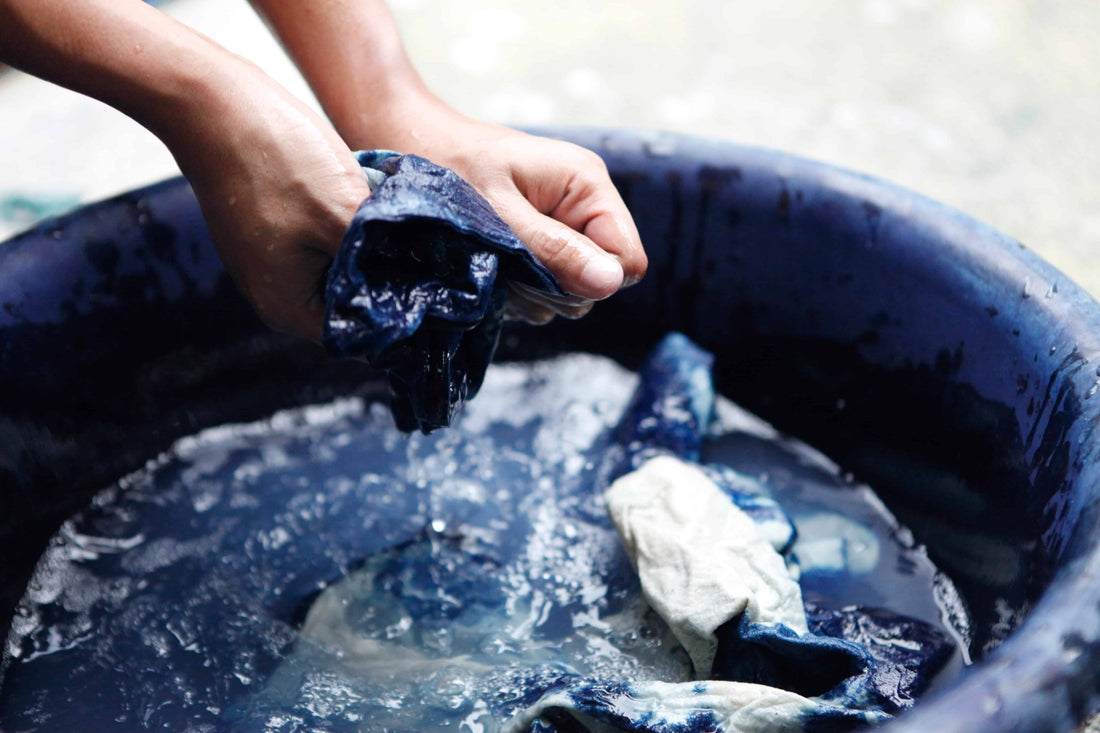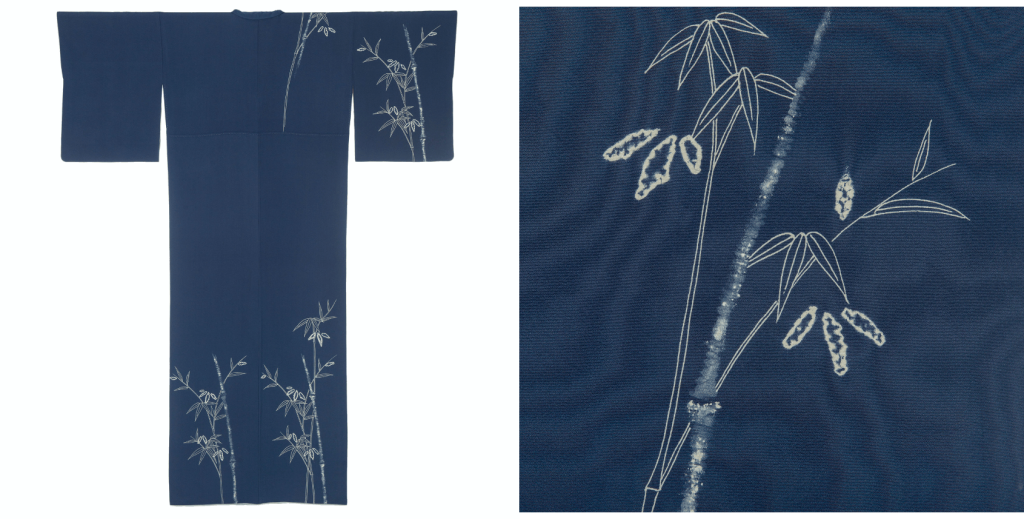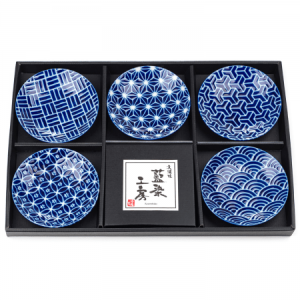As Shibori patterns grow more popular and more fashionable on the British high street, we thought we'd dig a little deeper into the history of the traditional Japanese tie-dyeing. Read on to discover the different types of Shibori dyeing techniques.
What is Shibori?
Shibori - meaning to wring or squeeze - is an old Japanese tradition of tie-dyeing fabric, most commonly using indigo dye. However, there are many different kinds of Shibori dyeing meaning translating it into our late 20th century sense of tie-dyeing is possibly a bit reductive and diminishing to the history of the tradition.
絞る (しぼる), shiboru = to wring, to squeeze : shibori is the noun form

The history of Shibori
The earliest recorded use of Shibori dyeing techniques dates back to the 8th century - when Emperor Shomu gifted a number of items to Todai-ji temple in Nara, among them some Shibori-dyed cloth. However, the technique would not enter mainstream use until the 17th century.
Shibori became popular among the lower classes who during the Edo era (17th-19th centuries) were forbidden from wearing silk. The Tokugawa Shogunate (the feudal military government of Japan at the time) prohibited this association with wealth and luxury, leading chōnin (lower class civilians) to find an alternative cloth with aesthetic appeal. As popularity grew, new techniques emerged such as Tsutsugaki, in which rice paste is used to great patterns before the actual dyeing takes place.
The practise of Shibori first became popular in the town of Arimatsu, in Aichi, as the town sat along the Tokaido road between Osaka and Tokyo. Arimatsu is a historic town known for its kimono textile industry - more specifically, for shibori-dyed textiles.

Different Shibori dyeing techniques
So what are the different variations of shibori dyeing, and how do they differ?
- Kumo Shibori - Kumo Shibori is also known as 'spider tie-dye' in the West, as the resulting design resembles (you guessed it) spider webs! To achieve this pattern, fibers are tied around sections of fabric to produce a condensed repeating spider-web pattern.
- Miura Shibori - This process involves looping and binding (see the picture below) where the fabric is plucked through. The resulting pattern resembles water ripples!

- Kanoko Shibori - Kanoko Shibori is perhaps the most popular variation. Small pinches of fabric are tied to create a repeating, but not necessarily perfectly uniform pattern. It is perhaps the most similar to Western tie-dyeing where elastic bands are used.
- Arashi Shibori - also known as 'pole wrapping shibori' requires wooden or copper poles, around which the cloth is twisted, wrapped, and bound. The outcome is a unique stripey design.
- Itajime Shibori - This is a shaped-resist technique. Traditionally, artisans used blocks of wood to craft bold, geometric-like patterns of circles and triangles. Contemporary practioners, however, use plastic and clay shapes, which prevent the area covered from dyeing.
Nui Shibori - The most detailed variation of Shibori combines dyeing with stitching. The process is similar to kanako, but rather than elastic bands, stitches are used to create resist patterns alongside wooden dowels to create more specifc designs.
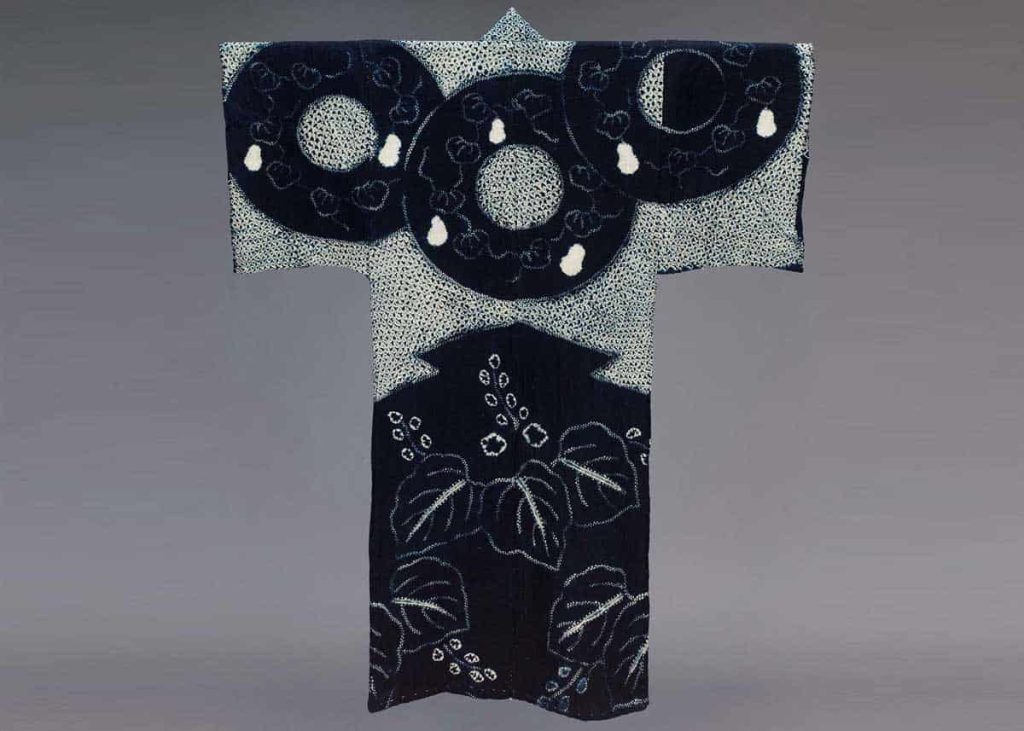
Shibori at The Japanese Shop
Here at The Japanese Shop, we stock all sorts of traditional and authentic Japanese gifts and items. The following are some of our items made with Shibori dyeing techniques, or which replicate the patterns made this way.
Our Midnight Bamboo kimono is our best example of traditional Shibori dyeing techniques! The vintage kimono is decorated with bamboo stalks and leaves. The intricate and unique design is all thanks to a Nui Shibori technique, making it a one-of-a-kind piece!
Our Osaka Small Plate Set is (obviously) not Shibori dyed as it isn't fabric. However, the plates are painted with classic Japanese designs, reminiscent of the various Shibori patterns available! Impress your guests at your next big dinner night serving up your specialities on this selection of traditional Japanese tableware.
This handkerchief depicts a map of Japan on indigo cotton, channelling the classic indigo dyeing process, characteristic of traditional Japanese designs. The handkerchief can be used similarly to furoshiki, or you could even make your own homemade mask with our tutorial here!
The stunning Nagoya dish set is the cherry on top of your Asian-inspired dinner party. Featuring classic Japanese patterns similar to Shibori, the rich indigo dishes make the perfect gift for those big on Japanese cuisine and serving in style.
Where can I see Shibori in person?
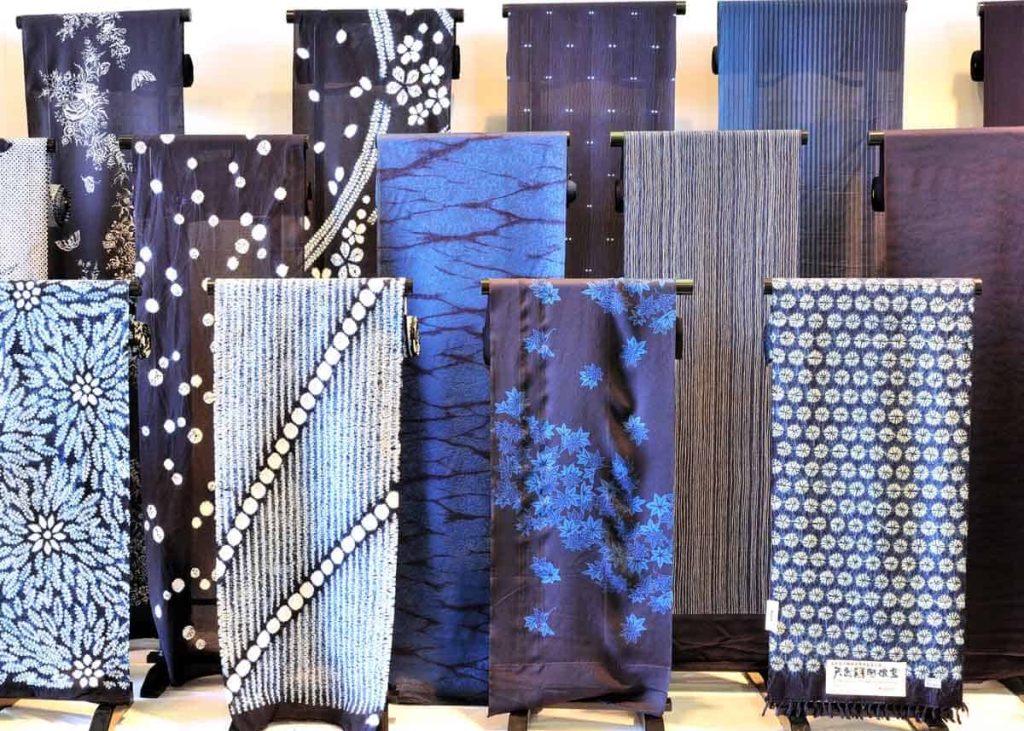
Wondering where you can see shibori dyeing techniques in action? Each year in June, the town of Arimatsu holds a festival to showcase Shibori techniques and textiles. Check out this Shibori Festival blog from NotJustNat to see how the festival is celebrated!
You can also discover the tradition in depth during a worthwhile trip to Kyoto! Though Kyoto Shibori Museum was opened in 2010, the curators have been creating shibori-dyed cloth since the 1940s. The museum is entertaining and educational for anyone with even the slightest interest in textiles and Japanese clothing design, and even has a gift shop of wonderful Shibori-dyed delights!
Ome, a small town outside of Tokyo, is home to the Japanese Indigo Dyeing Studio, Kosoen. The studio allows you to get up close to each step of the dyeing process, in an industry struggling against newer synthetic dyes created in the West. Enjoy a day out of the bustling city and observe a rare and unique art form. For more information of Shibori artists and designers, check out the World Shibori Network here!
We hope you enjoyed learning about Shibori with us - don't forget to keep an eye out for its stunning patterns on your local high street! If you have any questions, don't hesitate to drop us a comment. In the meantime, why not check out some of our fantastic, unique gifts on offer at The Japanese Shop.
Dōmo Arigatō Gozaimasu!

